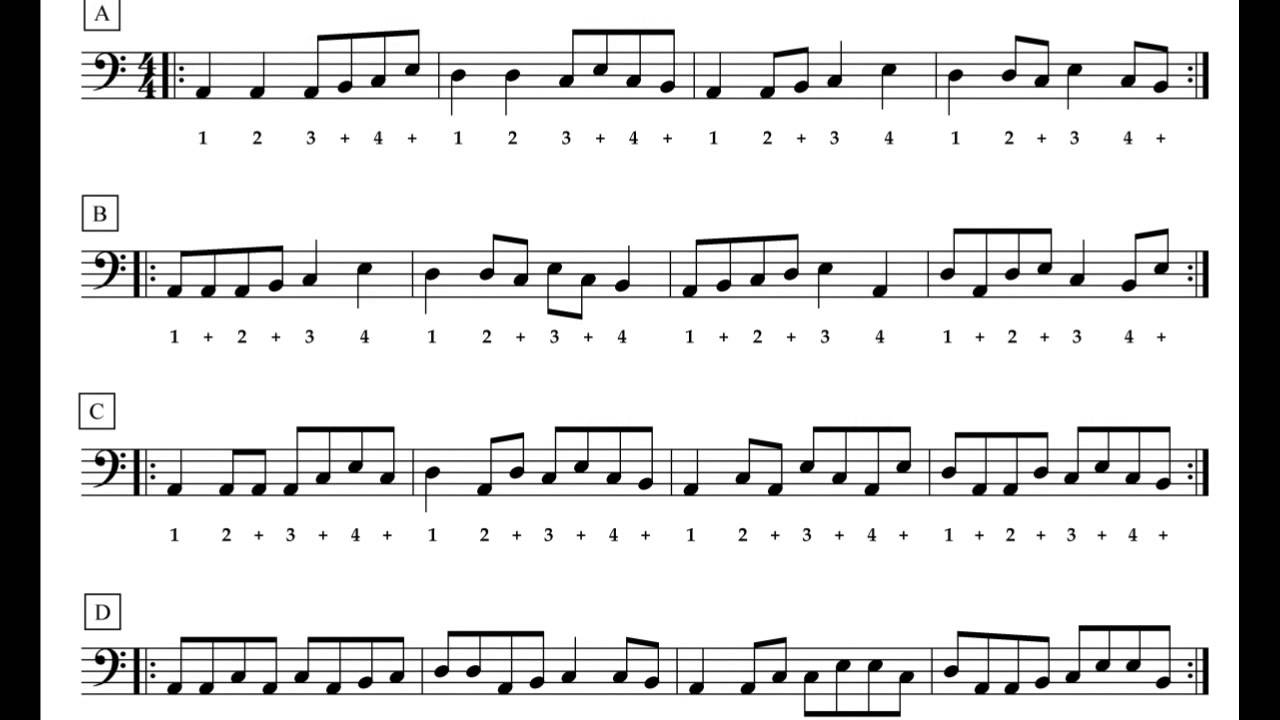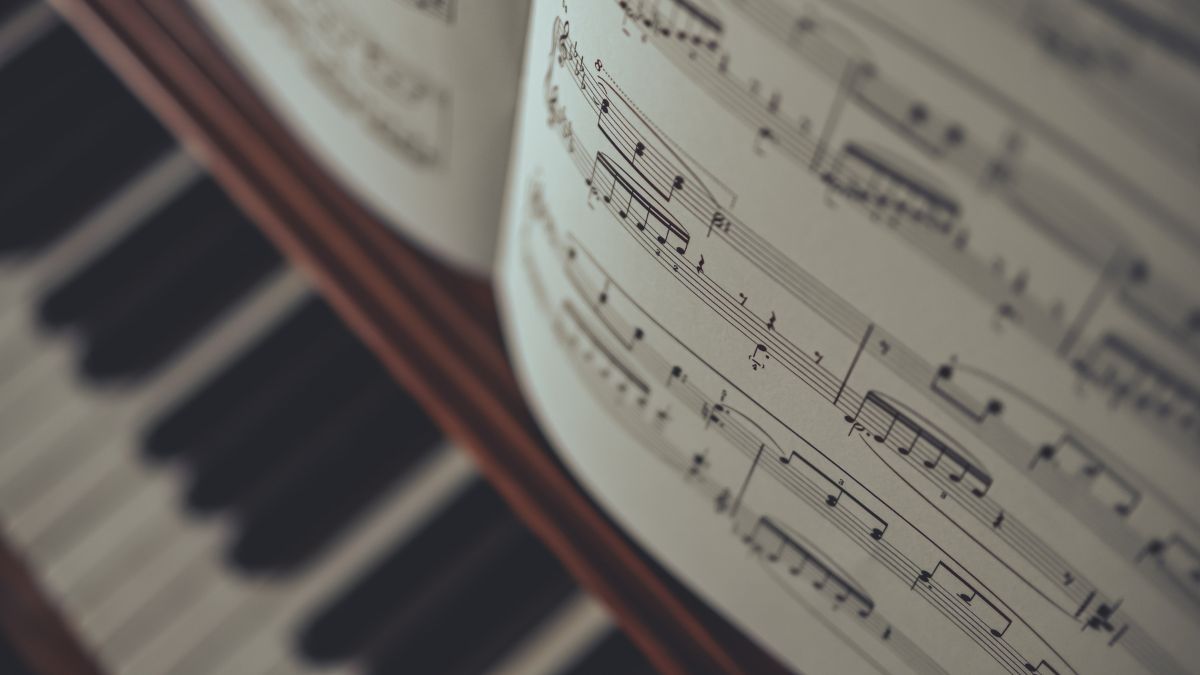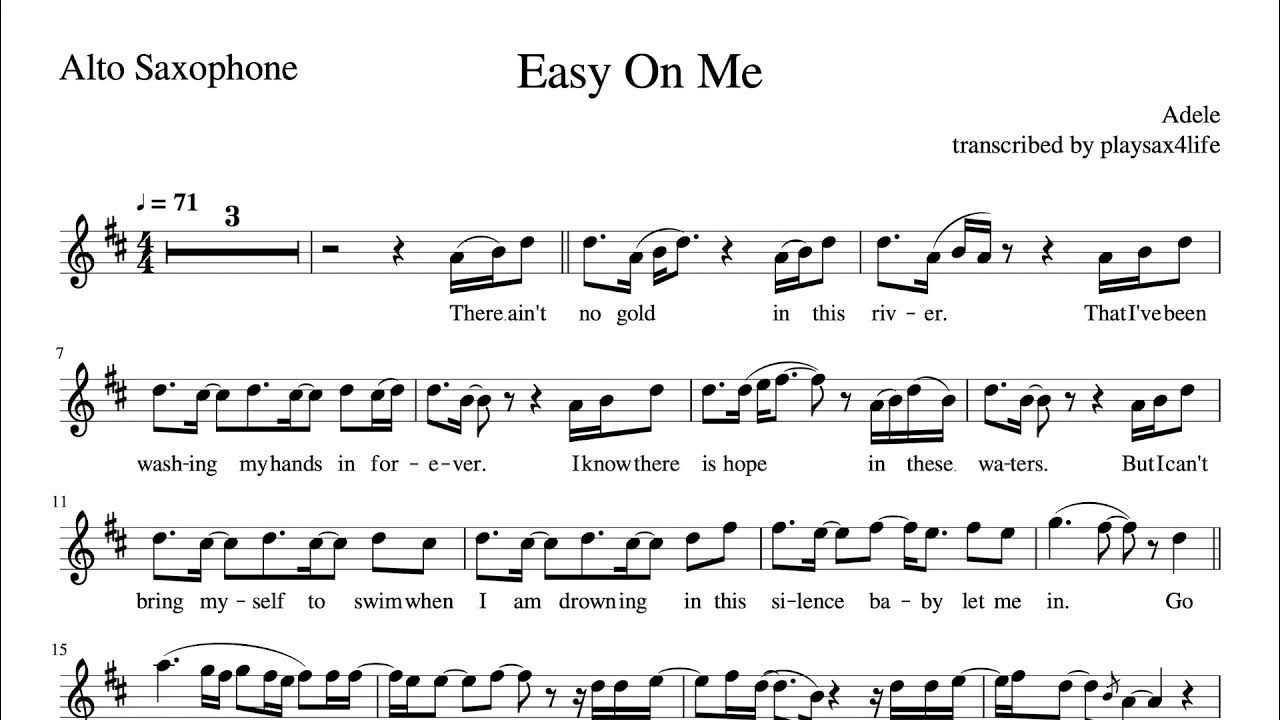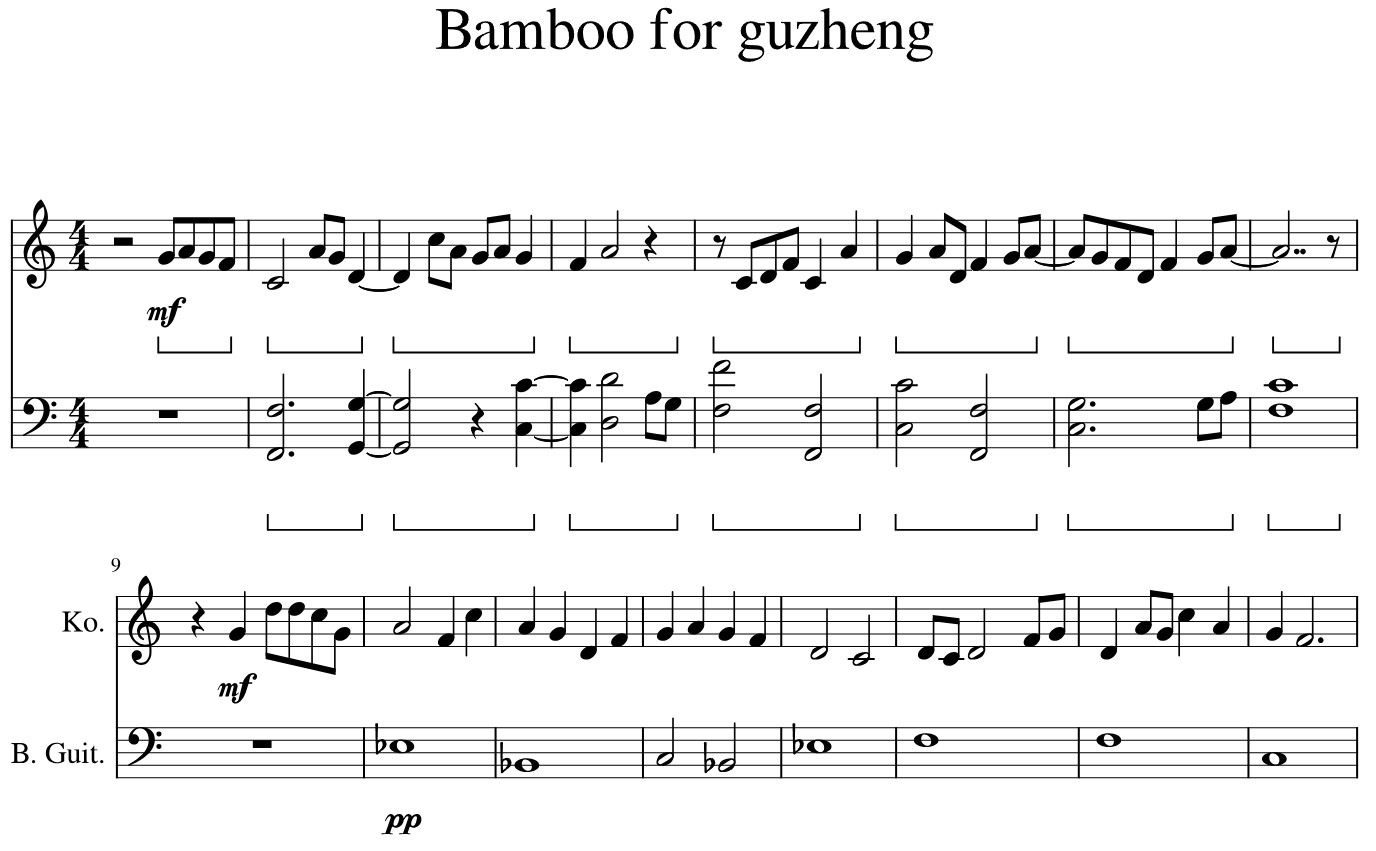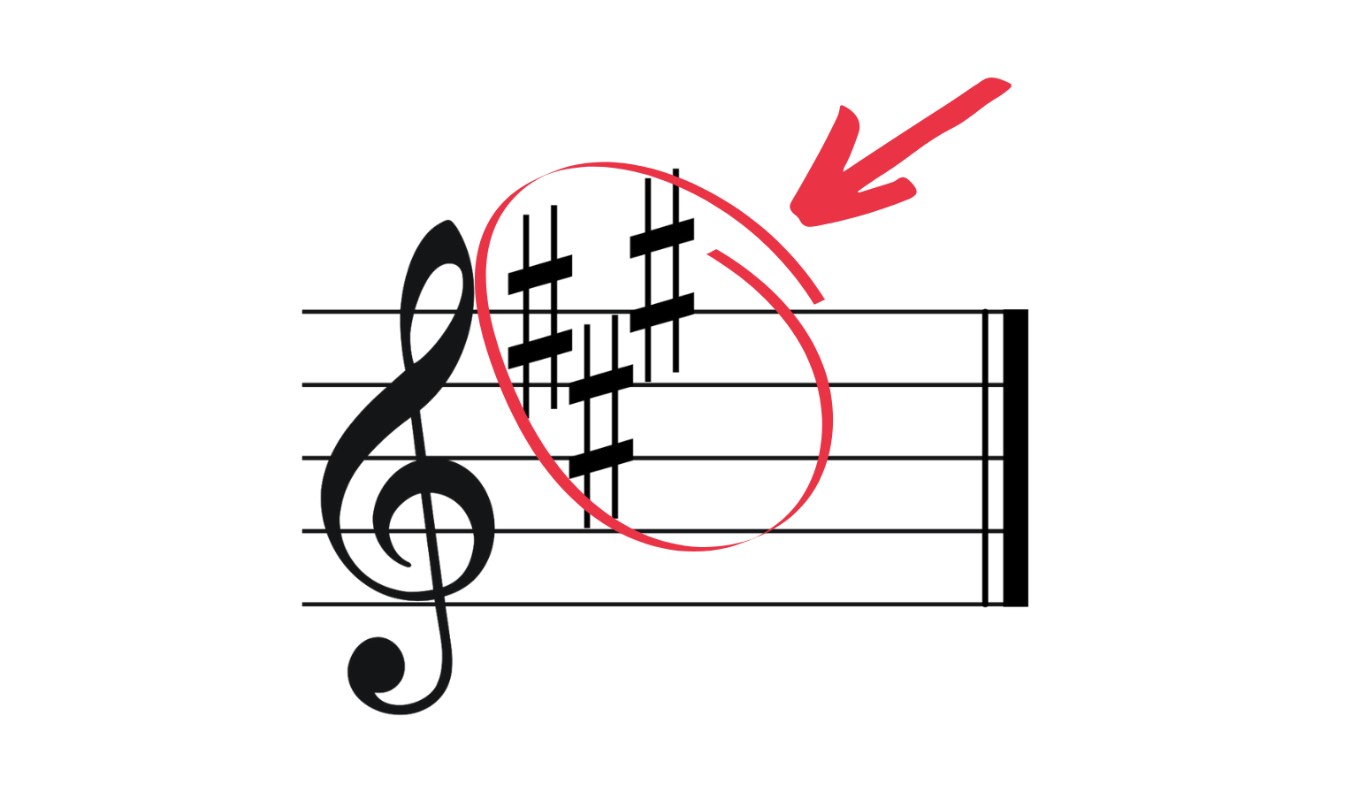Home>Production & Technology>Sheet Music>How To Read Choir Sheet Music


Sheet Music
How To Read Choir Sheet Music
Modified: February 23, 2024
Learn how to read and understand choir sheet music with our comprehensive guide. Explore different notation symbols and techniques to master sheet music for choir performances.
(Many of the links in this article redirect to a specific reviewed product. Your purchase of these products through affiliate links helps to generate commission for AudioLover.com, at no extra cost. Learn more)
Table of Contents
Introduction
Sheet music is a harmonious language that allows musicians to bring beautiful melodies and harmonies to life. It acts as a roadmap, guiding musicians through a musical composition. For choir singers, reading sheet music is an essential skill that opens up a world of possibilities for performing and collaborating with others.
In this article, we will explore the art of reading choir sheet music and help you develop the skills needed to navigate and interpret the various musical notations, symbols, and markings found on the sheet music.
Whether you’re a beginner or an experienced singer, understanding and deciphering sheet music can seem like a daunting task. However, with patience, practice, and the right knowledge, you can confidently approach choir sheet music and bring your vocal talents to new heights.
We will break down the different components of sheet music, from the clef and key signatures to note durations and other musical symbols. By the end of this article, you will have a solid understanding of how to read choir sheet music and be well-equipped to perform with accuracy and interpretation.
So, grab your sheet music and let’s dive into the world of reading choir sheet music!
Understanding Musical Notation
Musical notation is the written representation of music. It uses various symbols, notes, and markings to convey the pitch, rhythm, and expression of a musical piece. Understanding the basic elements of musical notation is crucial for reading choir sheet music effectively.
The staff is the foundation of musical notation. It consists of five horizontal lines and four spaces. Each line and space represents a different pitch. The higher the note is on the staff, the higher its pitch. The placement of notes on the staff is determined by clefs.
The clef is a symbol used at the beginning of the staff to indicate the pitch range of the notes. The most common clefs used in choir sheet music are the treble clef (also known as the G clef) and the bass clef (also known as the F clef).
The treble clef is used for higher-pitched instruments and voices, while the bass clef is used for lower-pitched instruments and voices. It’s essential to familiarize yourself with these clefs and their corresponding pitch ranges in order to accurately read and sing the notes in choir sheet music.
Another essential aspect of musical notation is key signatures. Key signatures are the collection of sharp or flat symbols found at the beginning of a piece of sheet music. They indicate the tonal center or key of the music. By understanding key signatures, you can determine the scale and pitch relationships within a musical composition.
Note durations are represented by different types of notes and rests. By understanding these symbols, you can accurately interpret the rhythm and timing of the music. Common note durations include the whole note, half note, quarter note, eighth note, and sixteenth note.
In addition to notes and rests, musical notation also includes a variety of other symbols and markings. Dynamics indicate the volume of the music and range from pianissimo (very soft) to fortissimo (very loud). Articulations, such as staccato, legato, and accents, specify how the notes should be played or sung.
The lyrics of a song are often included in choir sheet music. These lyrics help singers connect with the meaning of the music and sing with proper phrasing and expression. It’s important to read the lyrics along with the notes to fully understand the intention and emotion behind the piece.
To excel in choir singing, mastering sight-singing is crucial. Sight-singing is the ability to sing a musical piece at first sight without any prior practice. It requires strong music reading skills and a good understanding of intervals and pitch relationships.
By familiarizing yourself with the various components of musical notation and practicing regularly, you will become a confident reader of choir sheet music. In the following sections, we will delve deeper into each of these elements, providing you with the tools you need to read and interpret choir sheet music with ease and proficiency.
Identifying and Reading the Clef
In sheet music, the clef symbol is used to indicate the pitch range of the notes and helps determine their placement on the staff. There are two primary clefs used in choir sheet music: the treble clef (G clef) and the bass clef (F clef).
The treble clef, also known as the G clef, is commonly used for higher-pitched instruments and voices. It resembles a stylized letter “G” and is placed on the second line of the staff. This clef indicates that the note on that line is G above middle C.
To read the treble clef, it’s essential to familiarize yourself with the pitches associated with the lines and spaces. Starting from the bottom line and moving upwards, the lines of the treble clef represent the notes E, G, B, D, and F. And the spaces represent the notes F, A, C, and E. By memorizing these notes, you can quickly identify and sing the corresponding pitches in choir sheet music.
The bass clef, also known as the F clef, is used for lower-pitched instruments and voices. It appears as a backwards C with two dots and is placed on the fourth line of the staff. This clef indicates that the note on that line is F below middle C.
Similar to the treble clef, the bass clef has pitches associated with its lines and spaces. The lines represent the notes G, B, D, F, and A, starting from the bottom line and moving upwards. The spaces represent the notes A, C, E, and G. By familiarizing yourself with these pitches, you can confidently sing the corresponding notes when reading the bass clef in choir sheet music.
Choir sheet music often includes both treble and bass clef, catering to the different vocal ranges within a choir. This means that some singers will read from the treble clef, while others will read from the bass clef, depending on their vocal parts.
It’s important to note that in choir sheet music, you may also encounter other clefs such as the alto clef and tenor clef, which are specific to certain vocal range parts. However, these clefs are less common in choir sheet music and often appear in more advanced choral compositions.
By understanding the treble and bass clefs and their associated pitches, you will be able to confidently read and sing the notes on choir sheet music. With practice, you will become familiar with the placement of the notes on the staff and navigate the sheet music with ease.
Understanding Key Signatures
In choir sheet music, key signatures play a vital role in indicating the tonal center or key of a musical composition. They consist of a collection of sharps or flats placed at the beginning of a piece of sheet music and serve as a reference point for the pitch relationships within the music.
Key signatures are represented by specific patterns of sharps or flats. The order in which these sharps or flats appear on the staff provides valuable information about the key of the music. For example, a key signature with one sharp indicates the key of G major or E minor, while a key signature with four flats indicates the key of E flat major or C minor.
Understanding key signatures allows you to navigate the sheet music more efficiently by recognizing the tonal center and anticipating certain notes that may be altered throughout the piece. For instance, if a key signature has two sharps, you know that every F and C in the music will be automatically sharpened (raised by a half step).
One helpful mnemonic device for remembering the order of sharps in key signatures is the phrase “Father Charles Goes Down And Ends Battle.” Each letter represents a sharp in the order they appear: F#, C#, G#, D#, A#, E#, B#.
Similarly, for flats, the mnemonic device is “Battle Ends And Down Goes Charles’ Father.” The order of the flats is: Bb, Eb, Ab, Db, Gb, Cb, Fb.
It’s important to note that key signatures can also indicate minor keys. For example, a key signature with three flats indicates either the key of A flat major or F minor.
As you become more familiar with key signatures, you will develop a natural sense of tonality and be able to identify the key of a piece simply by glancing at the key signature at the beginning of the sheet music.
By understanding key signatures, you will have a better grasp of the tonal center and pitch relationships within a musical composition. This knowledge will enhance your ability to accurately read and perform choir sheet music and contribute to the overall harmonic structure of the choir’s performance.
Recognizing Note Durations
In choir sheet music, notes and rests are used to indicate the duration of sounds and silences within a musical composition. Understanding the different types of notes and rests will allow you to accurately interpret the rhythm and timing of the music.
Notes are represented by oval-shaped symbols placed on the staff. The duration of a note is determined by the shape of the notehead and any additional flags or beams attached to it. Common note durations include:
- Whole Note: A whole note has an open oval-shaped notehead. It is held for the entire duration of a measure.
- Half Note: A half note has a similar oval-shaped notehead, but it is filled in. It is held for half the duration of a whole note.
- Quarter Note: A quarter note has a filled-in oval-shaped notehead with a stem. It is held for one-fourth the duration of a whole note.
- Eighth Note: An eighth note has a filled-in oval-shaped notehead with a stem and a flag attached to the end of the stem. It is held for one-eighth the duration of a whole note.
- Sixteenth Note: A sixteenth note has a filled-in oval-shaped notehead with a stem and two flags attached to the end of the stem. It is held for one-sixteenth the duration of a whole note.
In addition to notes, rests are used to indicate periods of silence or pauses in the music. Rests are represented by symbols that resemble notes but have different designs. Common rests include:
- Whole Rest: A whole rest indicates a full measure of silence in the music. It looks like a rectangle positioned vertically within a measure.
- Half Rest: A half rest indicates a half measure of silence. It resembles a hat sitting on top of the third line of the staff.
- Quarter Rest: A quarter rest indicates a quarter measure of silence. It looks like a squiggly line positioned on the middle line of the staff.
- Eighth Rest: An eighth rest indicates an eighth measure of silence. It looks like a small flag positioned on the middle line or space of the staff.
- Sixteenth Rest: A sixteenth rest indicates a sixteenth measure of silence. It looks like a small flag with an additional curl positioned on the middle line or space of the staff.
By recognizing the different note durations and rests in choir sheet music, you will be able to accurately perform and maintain the correct rhythm of the composition. Practice counting and clapping the rhythms of various musical passages to solidify your understanding of note durations and rests.
Understanding note durations is essential for maintaining synchronization and cohesion within a choir. By mastering these concepts, you will contribute to a well-balanced and harmonious performance.
Interpreting Musical Symbols and Markings
Choir sheet music is filled with a wide range of symbols and markings that provide valuable information about how to perform a musical composition. Understanding and interpreting these symbols and markings is crucial for accurately expressing the dynamics, articulations, and other nuances of the music.
One important aspect of interpreting musical symbols is dynamics, which indicate the relative volume or intensity of the music. These markings range from soft to loud and include:
- Pianissimo (pp) – very soft
- Piano (p) – soft
- Moderato (mp) – moderately soft
- Mezzo Piano (mp) – moderately soft
- Mezzo Forte (mf) – moderately loud
- Forte (f) – loud
- Fortissimo (ff) – very loud
Articulations are another set of symbols and markings that indicate how to perform individual notes or phrases. Some common articulations include:
- Staccato – indicating short, detached notes
- Legato – indicating smooth and connected notes
- Accent – indicating a strong emphasis on a particular note
- Tenuto – indicating to hold a note for its full value
In addition to dynamics and articulations, choir sheet music may also include other markings to guide performers. These markings include:
- Tempo markings – indicating the speed or tempo of the piece, such as allegro (fast) or adagio (slow)
- Repeat signs – indicating sections of music that should be played or sung multiple times
- Coda – indicating a specific section or passage to jump to
- Fermata – indicating to hold a note or rest longer than its written value
- Expression markings – indicating the desired mood or emotion of the music, such as dolce (sweetly) or con brio (with vigor)
It’s important to carefully study and understand these symbols and markings to ensure accurate interpretation and performance of the music. Paying attention to these details can elevate your choir’s performance by adding depth, expression, and clarity to the musical rendition.
By practicing and familiarizing yourself with these symbols and markings, you will become proficient in interpreting and incorporating them into your choir performances, ultimately enhancing the overall musical experience.
Reading the Lyrics
In choir sheet music, the lyrics of a song are often included to guide singers in delivering the intended message and emotions of the music. Reading and understanding the lyrics is essential for connecting with the meaning of the piece and delivering a heartfelt performance.
The lyrics are typically displayed below the staff, aligned with the corresponding notes. Each syllable of a word is usually aligned with the appropriate note or musical phrase. This alignment helps singers know when to sing each word or phrase in relation to the musical rhythm.
When reading the lyrics, pay attention to the phrasing and articulation markings indicated by the composer. These markings can provide insights into how certain words or phrases should be emphasized or connected to create a more expressive performance.
Understanding the meaning of the lyrics is crucial for conveying the intended emotions and story of the music. Take the time to explore the lyrics outside of the music, ensuring that you fully grasp the context and essence of the words being sung. This knowledge will help you deliver a more genuine and heartfelt performance.
Additionally, consider the diction and pronunciation of the lyrics. Aim to enunciate each word clearly, paying attention to consonants and vowel sounds. Clear diction will help in conveying the message of the lyrics to the audience and fellow choir members.
When rehearsing the music, it can be helpful to practice singing the lyrics separately from the melodic lines. This will allow you to focus on understanding and delivering the words without the distractions of the music. Once you feel comfortable with the lyrics, you can then work on integrating them fluidly with the melody.
Remember that the lyrics are an integral part of the musical expression. By effectively reading and interpreting the lyrics, you will be able to connect with the audience on a deeper level, conveying the emotions and story of the music through your voice and performance.
Following the Dynamics and Articulations
In choir sheet music, dynamics and articulations are essential components that bring the music to life. Dynamics refer to the varying levels of volume, while articulations indicate how each note or phrase should be played or sung. Following these markings accurately allows for a more expressive and dynamic choral performance.
Dynamics are indicated by symbols and terms that indicate the desired volume or intensity of the music. These markings range from very soft (pianissimo, or pp) to very loud (fortissimo, or ff), with various degrees of softness or loudness in between. It’s crucial to pay close attention to these markings to achieve the desired dynamic contrast throughout the piece.
Articulations, on the other hand, guide the way each note or phrase should be executed. Some common articulations include staccato (short and detached), legato (smooth and connected), accent (emphasized attack), and tenuto (held for its full value). These articulations help shape the phrasing and overall musical interpretation.
When following dynamics and articulations, listening to examples of the music or recordings of professional choirs can be immensely helpful. The recordings can give you a clearer understanding of how the dynamics and articulations are executed and allow you to imitate and replicate those nuances in your own performance.
It’s important to be mindful of the dynamic changes and articulation markings throughout the piece. Highlight or annotate the sheet music to remind yourself of these markings, and practice them consistently to develop muscle memory and ensure a consistent and accurate performance.
When rehearsing as a choir, pay attention to how the different vocal sections interact and balance with each other in relation to the dynamics. This collective awareness and precision will result in a more cohesive and harmonious performance overall.
Lastly, remember that dynamics and articulations not only help convey the composer’s intentions but also add depth and emotional impact to the music. By faithfully following the dynamics and articulations in choir sheet music, you actively contribute to the overall musical interpretation and create a captivating and engaging performance for both yourself and your audience.
Mastering Sight-Singing
Sight-singing is the ability to read and sing a piece of music at first sight without prior practice. It is a valuable skill for choir singers as it enables them to quickly learn and perform new music with accuracy and confidence. Mastering sight-singing requires a combination of musical knowledge, ear training, and practice.
One fundamental aspect of sight-singing is having a solid foundation in music theory. Understanding concepts such as key signatures, scales, intervals, and rhythm patterns will greatly aid in sight-singing proficiency. By recognizing these elements within a musical piece, you can more confidently anticipate the melodic and rhythmic patterns as you sing.
Ear training is another critical component of sight-singing. Developing your ability to recognize and reproduce pitches accurately by ear will greatly enhance your sight-singing skills. Practice exercises like singing scales, intervals, and melodies by ear can help train your ear to recognize pitch relationships and intervals within a musical context.
When sight-singing, it’s important to pay attention to the overall structure and form of the music. Identify the key, time signature, and any repeated sections or phrases. This will give you a roadmap as you navigate the piece and help you anticipate musical patterns and changes.
Start by sight-reading music that is within your vocal range and gradually challenge yourself with more complex pieces. Begin with shorter musical passages and gradually work your way up to longer and more intricate compositions. Taking it step by step will allow you to build confidence and gradually improve your sight-singing abilities.
As you sight-sing, focus on maintaining a steady tempo and rhythm. Counting aloud or internally can help you stay in time and accurately navigate the music. Be attentive to any tempo markings or rhythmic intricacies indicated in the sheet music and strive to execute them accurately as you sight-sing.
Practice sight-singing exercises regularly to develop your skills. There are many resources available, such as sight-singing books and online exercises, that provide graduated exercises to help you improve your sight-singing abilities over time. In addition to individual practice, sight-sing with others in a choir setting to further refine your ensemble skills.
Remember to approach sight-singing with patience and persistence. It is a skill that takes time to develop and improve. Stay committed to regular practice, seek feedback from a vocal coach or choir director, and embrace opportunities to sight-sing as much as possible.
By mastering sight-singing, you will become a versatile and valuable choir singer, capable of quickly learning and performing new music with confidence and precision. Your ability to sight-sing opens doors to new musical challenges and enriches the overall performance of the choir.
Conclusion
Reading choir sheet music is an essential skill for any choir singer. It allows you to accurately interpret and perform musical compositions, collaborate with fellow singers, and bring the music to life. By understanding and applying the principles of musical notation, you can confidently navigate the various elements found on choir sheet music.
Throughout this article, we have explored the components of sheet music, starting with understanding the clef and identifying the pitch range. We then delved into the importance of key signatures, note durations, and interpreting musical symbols and markings, such as dynamics and articulations. Alongside these elements, we also emphasized the significance of reading the lyrics and connecting with the emotions of the music.
Additionally, we explored the ability to sight-sing, a skill that greatly enhances your effectiveness as a choir singer. By mastering sight-singing, you can fluently and confidently perform new music, contributing to the overall musicality and harmony of the choir.
As you continue to develop and refine your skills in reading choir sheet music, remember that practice and patience are key. Regular practice sessions, combined with an openness to learning and seeking feedback, will help you grow as a singer and improve your ability to read and perform sheet music accurately.
Ultimately, the joy of choir singing lies in creating harmonious melodies, expressing emotions, and connecting with fellow singers and audience members. By honing your skills in reading choir sheet music, you will enhance your musical experience and contribute to captivating and moving performances that resonate with others.
So, keep exploring, practicing, and embracing the power of choir sheet music as you continue on your musical journey. Together, let us create beautiful harmonies and celebrate the transformative power of music.

